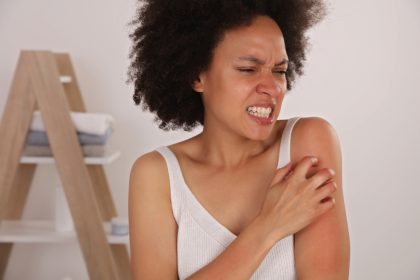For the estimated 1% of Americans living with celiac disease, navigating everyday life requires constant vigilance against gluten exposure. The autoimmune disorder, triggered by proteins found in wheat, barley and rye, can damage the small intestine when even minimal amounts of gluten are consumed. This necessity for caution extends beyond food choices to social interactions, particularly intimate moments between partners.
Recent research presented at Digestive Disease Week in San Diego has provided long-awaited scientific clarity on a question that has troubled many celiac patients: Is kissing someone who has just consumed gluten dangerous? The findings deliver welcome reassurance for those who have worried about this common interaction.
The science behind celiac concerns
Celiac disease forces affected individuals to maintain strict gluten-free diets, eliminating common foods containing wheat, barley and rye. The condition differs from gluten sensitivity as it involves an autoimmune response that can cause intestinal damage rather than just digestive discomfort.
When someone with celiac disease consumes gluten, their immune system responds by attacking the small intestine’s lining. This reaction damages the villi, small finger-like projections that absorb nutrients, potentially leading to malnutrition alongside symptoms including abdominal pain, bloating, diarrhea and fatigue.
The seriousness of this reaction explains why celiac patients must avoid even trace amounts of gluten. The FDA defines gluten-free foods as containing less than 20 parts per million (ppm) of gluten, an extremely small threshold that highlights why patients remain vigilant about potential exposure from unexpected sources.
7 key findings from the kissing research study
Most kisses resulted in gluten levels below safety thresholds
The study conducted by Dr. Anne Lee from Columbia University’s Celiac Disease Center involved 10 couples where one partner had celiac disease and the other did not. When the non-celiac partners consumed 10 saltine crackers before kissing, 90% of the subsequent saliva samples from celiac partners showed gluten levels below the FDA’s 20 ppm threshold for gluten-free foods.
This finding represents the most significant takeaway from the research – the vast majority of kisses did not transfer enough gluten to exceed safety standards established for food consumption. This provides substantial reassurance for celiac patients who have worried about this form of exposure.
The study design intentionally created worst-case scenarios by having non-celiac partners consume multiple crackers immediately before kissing, making these results particularly meaningful for real-world situations where gluten consumption might be less concentrated.
Simple water consumption eliminated detectable gluten transfer
In the second scenario tested, non-celiac partners drank water before kissing their celiac partners. This straightforward precaution proved remarkably effective, as all subsequent saliva samples from celiac partners showed gluten levels below the 20 ppm threshold.
This practical solution offers an easy way for couples to eliminate concerns about gluten transfer through kissing. The effectiveness of water in removing gluten particles from the mouth provides a simple strategy that requires minimal effort while maximizing safety.
The finding suggests that basic oral hygiene measures can significantly reduce or eliminate the already low risk of gluten transfer through kissing, giving couples a practical approach to managing this concern.
Even elevated gluten levels did not trigger symptoms
Perhaps most reassuringly, the study found that even in cases where gluten transfer exceeded safety thresholds, celiac participants did not report experiencing symptoms. In one notable instance, a participant’s saliva contained 154 ppm of gluten, well above the 20 ppm threshold, yet reported no adverse reactions.
This observation suggests that the amount of gluten transferred through kissing, even when detectable, may be insufficient to trigger the immune response associated with celiac disease in most patients. The finding aligns with clinical observations that momentary exposure to small amounts of gluten typically does not produce symptoms.
The absence of symptoms even with measurable gluten transfer provides additional reassurance for celiac patients concerned about intimate contact with non-celiac partners.
Time delay reduced gluten presence
The study incorporated a five-minute waiting period in one scenario, examining whether time alone would reduce gluten presence in the mouth. While this approach was less effective than water consumption, the time delay did appear to reduce gluten concentration in most cases.
This finding suggests that natural processes in the mouth, including saliva production and swallowing, work to gradually clear food particles even without active intervention. For couples concerned about gluten transfer, incorporating a brief waiting period between eating and kissing provides an additional layer of precaution.
The time-based reduction of gluten presence offers flexibility for couples in situations where immediate water consumption might not be practical or convenient.
Findings align with clinicians’ observations
Gastroenterologists from major medical institutions, including the Mayo Clinic and Stanford University, noted that the study results confirm what many physicians have long advised patients based on clinical experience: kissing generally poses minimal risk for celiac patients.
This alignment between formal research and clinical observation strengthens confidence in the findings. The study provides scientific evidence supporting what many healthcare providers have told concerned patients when asked about kissing safety.
The validation of existing clinical guidance helps establish a standard approach to this common concern, allowing for more consistent advice across healthcare settings.
Individual sensitivity variations must be considered
While the research provides general reassurance, experts emphasized that celiac disease affects individuals differently. Some patients experience extreme sensitivity to even minimal gluten exposure, while others may have higher tolerance thresholds before experiencing symptoms.
This variation in sensitivity explains why some celiac patients report reactions from seemingly minimal exposures while others remain symptom-free even with measurable gluten transfer. The research acknowledges these differences while suggesting that for most patients, kissing represents a low-risk activity.
The findings encourage patients to consider their personal history of reactivity when determining what precautions feel appropriate for their specific situation rather than assuming universal risk.
Social anxiety about celiac significantly impacts quality of life
Beyond the physical findings, the research highlights how concerns about social interactions like kissing contribute to anxiety and reduced quality of life for many celiac patients. Online communities frequently discuss kissing precautions, demonstrating the real impact these worries have on relationships and dating experiences.
By providing scientific clarity on this common concern, the research addresses not just physical health but also the psychological well-being of celiac patients. Reducing anxiety about intimacy represents a meaningful improvement in quality of life for those living with the condition.
This aspect of the findings acknowledges the importance of addressing both medical and social dimensions of chronic conditions like celiac disease.
Implications for everyday life with celiac disease
For the celiac community, these findings represent a significant quality-of-life improvement. Dating and intimate relationships often create anxiety for those with dietary restrictions, particularly when those restrictions stem from medical necessity rather than personal choice.
Relationship experts note that clear communication remains important between partners. Discussing comfort levels and establishing simple routines, such as the non-celiac partner drinking water before kissing, can provide peace of mind while maintaining spontaneity in relationships.
The research does not suggest abandoning all precautions, particularly for highly sensitive individuals. Instead, it provides context for making informed decisions based on scientific evidence rather than fear or speculation.
The broader challenge of gluten avoidance
While kissing may pose minimal risk, the study underscores the broader challenges faced by those with celiac disease. Maintaining a strictly gluten-free diet requires vigilance across numerous contexts, from restaurant dining to medication ingredients and household products.
Nutritionists specializing in celiac disease emphasize that this research should be viewed as one piece of a comprehensive approach to gluten avoidance. The findings reduce concern about one specific exposure risk while reinforcing the importance of continued diligence in other areas.
For newly diagnosed patients especially, understanding which potential exposures warrant significant concern versus those that present minimal risk helps establish sustainable management strategies for living with celiac disease.
Expert guidance on precautionary measures
Gastroenterologists recommend that couples use practical judgment based on their experiences. For those who have been kissing without issues, major changes to routine are likely unnecessary. However, simple precautions can provide additional reassurance.
Recommended precautions include having the non-celiac partner drink water or brush teeth before kissing, particularly after consuming foods with high gluten content like bread or pasta. These measures effectively reduce even the small risk that exists without requiring significant lifestyle adjustments.
Healthcare providers suggest that couples who have established comfortable routines should continue what works for them, using this research as reassurance rather than a mandate to change existing practices that have proven successful.
Moving forward with confidence
The research presented at Digestive Disease Week represents an important step in addressing quality-of-life concerns for celiac patients beyond basic dietary restrictions. By applying scientific methodology to a common social concern, researchers have provided evidence-based guidance for a question previously answered primarily through anecdotal experience.
For the celiac community, this information offers permission to engage in normal intimate relationships without excessive fear. The findings demonstrate that with minimal precautions, kissing represents a low-risk activity for most celiac patients.
As research continues to address various aspects of life with celiac disease, the growing body of evidence helps patients distinguish between necessary vigilance and areas where concerns can be moderated, ultimately supporting fuller, less restricted lives despite the ongoing need for gluten avoidance.















